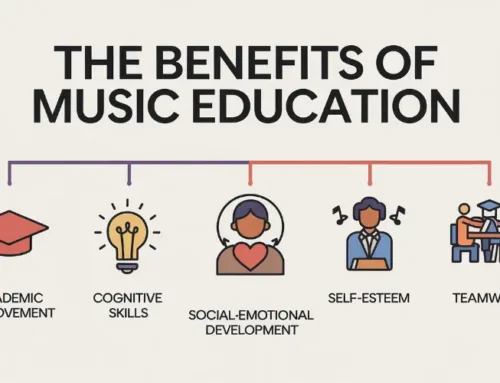Securing sustainable music education funding remains a critical challenge for schools nationwide in 2024, yet the importance of music programs in developing well-rounded students has never been clearer. Whether you’re a music teacher, administrator, or parent advocate, understanding how to access and maintain resources for your music program is essential for long-term success. With 76% of major music education foundations’ spending going directly to support music programs, there are more opportunities than ever to fund your program effectively.
The Proven Impact of Music Education Programs
Before diving into music education funding strategies, it’s crucial to build a compelling case for music education. Research consistently shows that students involved in music programs demonstrate:
– Higher academic achievement across subjects
– Improved cognitive development
– Enhanced social and emotional skills
– Better attendance rates
– Increased graduation rates
Traditional Funding Sources and How to Access Them
School District Budgets and Federal Support
While district funding forms the backbone of most music education programs, securing adequate resources often requires strategic advocacy. One significant opportunity is the Title IV-A funding under Every Student Succeeds Act, which provides federal support for well-rounded education initiatives including music programs.
Key approaches for securing district support include:
– Presenting data-driven evidence of program success
– Documenting student achievement and growth
– Highlighting community engagement
– Demonstrating alignment with district-wide educational goals
Grants and Foundation Support
Several established organizations offer substantial music education funding through grants. Leading examples include:
– The Mr. Holland’s Opus Foundation: Provides musical instruments to schools nationwide, focusing on low-income communities
– Give A Note Foundation: Offers year-round grant awards for public school teachers
– Classics for Kids Foundation: Supports sustainable stringed instrument music programs
– Guitar Center Music Foundation: Awards instruments and equipment to eligible music instruction programs
Modern Fundraising Strategies
Digital Campaigns and Crowdfunding
Online platforms have revolutionized music program fundraising:
– DonorsChoose: Create specific project requests for classroom needs
– Amazon Wishlist: Build and share equipment needs with supporters
– Adopt A Classroom: Connect with donors interested in supporting music education
Community Partnerships
Building sustainable partnerships can provide ongoing support through:
– Local businesses and corporations
– Music stores and instrument manufacturers
– Professional musicians and performers
– Arts organizations and cultural institutions
– Alumni networks and booster clubs
Maximizing Resources Through Technology
Modern technology offers cost-effective solutions for music education:
Digital Learning Platforms
– Practicing Musician: Offers comprehensive online music education completely free of charge
– Virtual performance platforms
– Digital sheet music libraries
– Remote instruction capabilities
Resource Management Systems
– Inventory tracking solutions
– Maintenance scheduling tools
– Digital asset management
– Administrative automation
Creating Sustainable Support Systems
Strategic Planning Elements
1. Establish a dedicated fundraising committee
2. Create an annual funding calendar
3. Develop multiple revenue streams
4. Build an emergency fund
5. Maintain detailed program metrics
Sales Partnership Opportunities
The National Association of Music Parents recommends various fundraising approaches, including:
– Product sales partnerships
– Community event sponsorships
– Music-themed fundraising events
– Gift card programs
Measuring and Communicating Impact
To maintain and grow funding support:
– Track student participation and achievement
– Document program milestones
– Calculate return on investment
– Share impact reports with stakeholders
– Monitor grant outcomes
Looking to the Future
As music education continues to evolve, new funding opportunities emerge through technology integration and innovative partnerships. Programs like Save The Music have helped over 2,700 schools start and sustain their music education funding for their programs, demonstrating the growing support for music education nationwide.
Take Action Now
1. Review current funding sources and identify gaps
2. Explore grant opportunities through provided foundation links
3. Implement digital fundraising strategies
4. Build community partnerships
5. Document your program’s impact
*For more information about specific grants and funding opportunities, contact your district’s music education coordinator or visit Save The Music’s resource center.*
This blog is generated from material covered in the PM professional development session: “Advocating for Music Programs” presented by Troy Peterson








Leave A Comment
You must be logged in to post a comment.